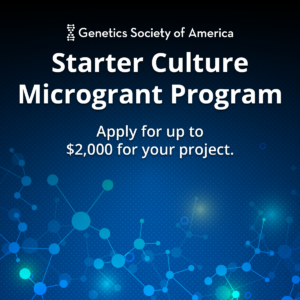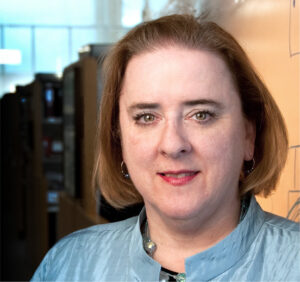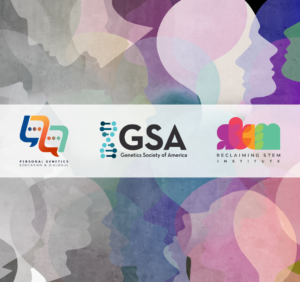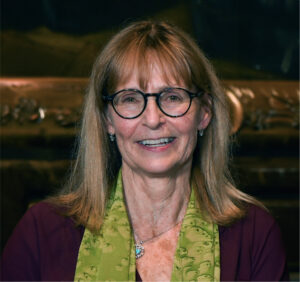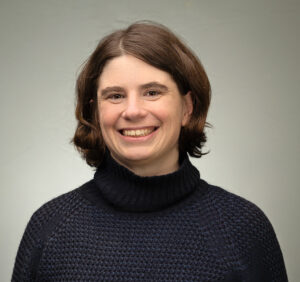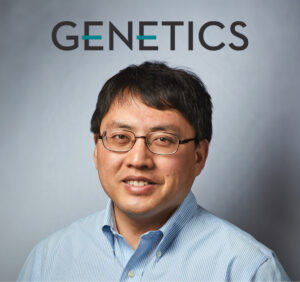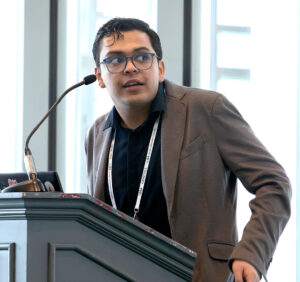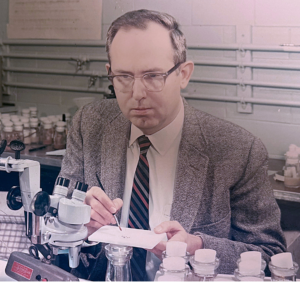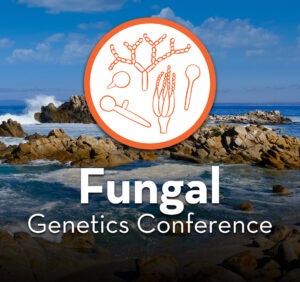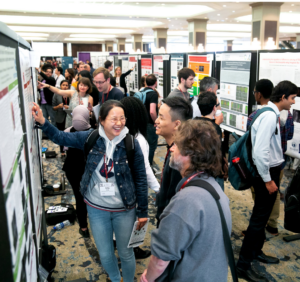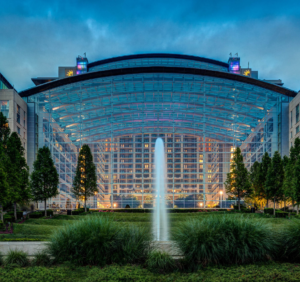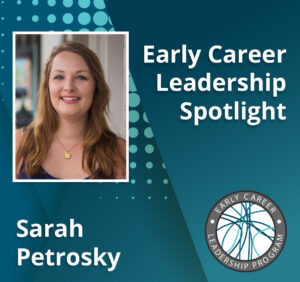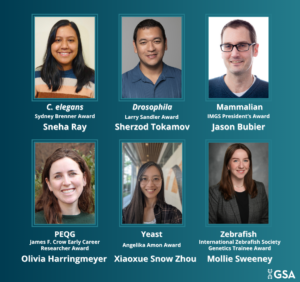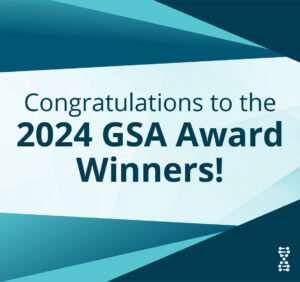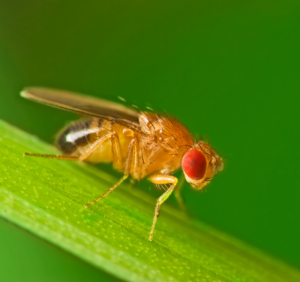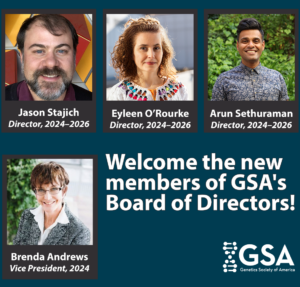What inspired you to become a scientist, and how did that interest evolve into the work that you’re doing today?
I had several amazing teachers in middle school and high school, and my ninth-grade biology teacher, Barb Schulz, was particularly inspirational. Through Barb, I learned the foundations of genetics, including what “autosomal dominance” meant. I was born with Stickler Syndrome, which is caused by an autosomal dominant mutation in the COL2A1 gene that encodes one of the Type II Collagen chains. This syndrome affects everything—hearing, vision, joints, etc. My dad had it as well, although he wasn’t diagnosed until I was born. Around 1990, Barb co-founded the Science Education Partnership (SEP) Program at Fred Hutchinson Cancer Center with Dr. Nancy Hutchison, with the goal of partnering high school teachers and their students with researchers to engage in hands-on science. Nancy became my first research mentor as part of a high school summer internship—I still have the Polaroid of the very first gel I ever ran in her lab. I wanted to become a high school biology teacher like Barb, so that is what I focused on as a biology major in college.
In 1996, I was awarded a Rotary Foundation Ambassadorial Scholarship to do a year of post-bacc research in plant genetics at Monash University in Melbourne, Australia. My research mentors, Dr. John Hamill and Dr. Cecilia Blomstedt, were incredibly supportive and they fully integrated me into their research program even though I was there for just a year. Shortly before I returned to the United States, John asked me if I had ever considered doing a PhD. This blew my mind because I never thought I was smart enough for it; I was also a first-generation college student, so I didn’t really have other examples in my family to draw from. I continued with my original plans to teach high school, earning a master’s in teaching and then teaching for several years. However, I really missed research and wanted the opportunity to combine teaching and research, which I felt would work best at the undergraduate level. I left teaching to earn my PhD in the Molecular and Cellular Biology program at the University of Washington, working on early C. elegans embryo development in Dr. Jim Priess’s lab. I then did a postdoc in Dr. Bob Goldstein’s lab at the University of North Carolina at Chapel Hill, working on germline development in tardigrades. I have been at Seattle Pacific University since 2012, where I am currently Associate Professor of Biology and serve as co-chair of the Biology department.
During your career, what are some misconceptions that you’ve had to face about scientists with disabilities?
Most misconceptions center around “ability”— that having a disability means we are less capable. To be honest, I faced more hurdles as a high school teacher with a disability than I have as a scientist. When I was in the Master of Arts in Teaching program, the program director told me directly that I should not teach since she was concerned students would “be mean to me.” It turns out that the school in which I was doing my placement teaching was worried my hearing impairment would be an insurance liability. Another common and more challenging misconception, although not limited to scientists, is that accommodations provide an “unfair” advantage, when in fact, they exist to level the playing field. It is particularly a concern when providing accommodations is seen as a “burden,” as I’ve experienced. I don’t have easy answers since no amount of training or awareness will resolve the issues without acceptance and follow-through.
What’s been your own experience navigating access to accommodations throughout your education and career?
My K-12 education was in a public school district that was one of the first in the state to fully integrate hearing-impaired students in mainstream classrooms. Because of the Individualized Education Plan (IEP) annual meetings, my needs were identified and met. Going to college was such a shock because I was completely on my own. Faculty were not trained in accommodations and many did not understand why they would need to provide them. I started college shortly after the Americans with Disabilities Act (ADA) was signed into law but several years before colleges had to be fully compliant. I remember my first week of classes as a freshman, taking an intro biology course in a fairly large theater-style lecture hall where even the front-row seats were some distance from the blackboard. The instructor had a tendency to talk to the board while he was writing, so I went up to him after class, explained that I relied on lip-reading to help with my hearing, and asked if he could face the class more often. He looked at me and asked, “Why?” He also did not allow me to record lectures on a cassette player. I lost my nerve, mumbled sorry, and never asked any professor for accommodations again. Thankfully, I had supportive peers who were willing to share their notes with me and I learned to memorize the textbooks word-for-word to make up for what I couldn’t hear. However, it taught me that I was 100% responsible for my own accommodations and to this day, I still have a hard time asking for help even though I know it shouldn’t be this way.
In recent years, I’ve been dealing with a decline in my mobility, which has meant that I can’t navigate stairs easily or stand for long periods. Every quarter, when classroom assignments are made, I check to ensure my classrooms are in accessible buildings and have stools available so I can sit down during class. My pedagogy is centered around active learning and moving around the classroom as students work in groups. I now need to rethink how to accomplish my pedagogical goals while being more physically limited. It has also made me much more aware of what I need to do to help my students. For example, when I was a postdoc, I mentored an undergraduate summer research student who had nerve damage in one arm that limited her range of motion. I had worked out a microinjection protocol for RNA interference in tardigrades and she wanted to follow up on my preliminary experiments to assess the efficacy of the protocol. Working together, we rigged the microinjection set-up to allow her to do the whole process one-handed. It took some troubleshooting, but she was determined to do it, and I made sure I didn’t impede her unnecessarily.
Over time, how has your view of your own abilities shifted, and what impact has that had on your research and teaching?
I’ve come to the realization that I chose a very challenging career path for someone with my syndrome. Much of my research relies on microscopy, and I have experienced four retinal detachments (I also have an amazing ophthalmologist who has saved my vision each time). Teaching requires being able to hear students’ questions and comments and spend hours on our feet. I think it has helped me be a better educator. Over the years, I’ve become more open about my limitations, particularly with my students. Since all of my research students are undergraduates, I spend a lot of time teaching them how to do some of the more specialized experiments in my lab. I can’t always do the experiments myself, so I’ve become better at developing other strategies to help them learn the techniques.
You’ve brought up a lot of practical barriers. From your perspective, what are some tangible ways that institutions could make labs and academic environments more accessible?
I could write volumes on this question, but I’ll focus on just one key aspect: More attention needs to be paid to physical access to research space. For example, in older buildings (and even in a few newer buildings I’ve seen), some lab doors are not wide enough to easily accommodate wheelchairs or scooters. Having doors that can be pushed in or that automatically open is helpful, even for individuals with temporary disabilities (such as using crutches to get around). When labs are remodeled for new investigators as part of their startup packages, these questions should be considered: Are there any benches and shelves of an appropriate height and width to allow individuals in wheelchairs/scooters to work comfortably? Is benchtop equipment (incubators, centrifuges, etc.) accessible to someone who is seated? Even something basic like a clear, wide walking path through the lab space can be helpful. For example, some people with balance issues may not present as visibly disabled, but any obstacles or narrow paths can pose tripping or falling hazards. Alarms should be visible as well as audible. I can’t hear any of the freezer alarms in my building because they are above my frequency range, so I’m completely dependent on students and colleagues to let me know when an alarm goes off. Labs may not always have individuals who need these accommodations, but just as “aging in place” has been a trend in home remodeling, labs should be prepared to welcome anyone, including current lab members whose physical needs may change either suddenly or over time.
For students or early career scientists with disabilities who are just getting started, what advice do you have for them as they begin to navigate through their own careers?
As a scientist, there have been many times when I have felt isolated and discouraged by my limitations. Even on my worst days, I’ve remembered why I am a scientist—why I love to study genetics and development—and I use that as motivation to figure out how to get through the immediate challenge. I’ve also learned that many of us have disabilities, whether visible or hidden, and it has helped when I’ve been able to form communities where we can support one another.







